Rubens' Adoration of the Shepherds from the Great Van Schorel Collection.
Developing the indications of Frits Lugt’s Repertoire des catalogues de ventes publiques (L.2299), The Getty Provenence Research conducted extensive research in 2016 on the dispersal of the important art collection that belonged to Pierre François Gisbert van Schorel, examining as many as 33 specimens belonging to public libraries in various countries from the catalog of the sale that took place in Antwerp in 1774, and reproducing several volumes of it in digital format. Although the citation of provenance from a Van Schorel collection occasionally appeared in some records of works included in publications of exhibitions or public museum institutions, the reference had never been given special consideration by scholars, hinted at only in concise usage annotations, analogous to those that can be repeated today with the simple computer operation known as “copy and paste.”
The Getty’s extensive research revealed the extraordinary importance of that sale, comparable to the famous Crozat and Mariette collections, also dismembered in Paris within those years. In a ponderous catalog of 428 pages preceded by 10 introductory pages, 202 oil paintings are accurately described, including 28 Rubens, 13 Van Dyck, 6 Rembrandt, 21 David Teniers the younger, 16 Lancret, 4 Jordaens, 7 Jan Brueghel the elder, 1 Pieter Brueghel the elder 1 Poussin and a long list of important painters, mainly Flemish and Dutch. In the introductory pages, the catalog written in French contains the following annotation: “On vendra à la fin des tableaux cinq Cartons de Tapisseries peints par Jacques Jordaens... Il y en a quatre dont les sujets sont tirès de l’histoire de Charlesmagne. Ces cinq Cartons consistent en 39 bande d’onze pieds de haut sur deux de large.” The catalog also features 623 remarkable drawings, spread over 12 volumes. Rubens, once again, shows there the collector’s preferences with 13 carefully described specimens among which excels a large sheet measuring 76 x 47 cm, a model for theAssumption of the Virgin above the high altar of Antwerp Cathedral. Then follow 15 drawings by Van Dyck, 7 by Rembrandt 6 by Frans Snyders, others by Poussin, David Teniers the younger, Jordaens. While Volume X mixes drawings by known and unknown painters, Volume XI is devoted to seascapes by authors specializing in the genre such as Bonaventure Peeters, Willem Van de Velde, Van Goyen, and others for a total of 100 works, while its second part under the title Ècole d’Italie include drawings by Palma the Elder, Taddeo Zuccaro, Mantegna (allegorical subject), Guercino, Annibale Carracci, Agostino Carracci, Borgianni, Tiarini, Cambiaso, Pietro da Cortona, Maratta, Solimena, Luca Giordano, Salvator Rosa, and others of uncertain attribution or by unknown authors.
The catalog continues with the part devoted to engravings, containing no less than 3,900 copies by Rubens, a painter on whom Van Schorel’s prevailing interests were evidently focused, 183 by Rembrandt and 1,249 by 300 other Flemish painters and engravers. Completing the collection is a list of 132 marble and bronze sculptures, 311 coins and medals, 125 Faenza ceramics, and 54 miscellaneous objects.
It is somewhat surprising that until the Getty Reserches there was virtually no news of this important collector, except for a few and mostly uncertain assumptions about the provenance of works now belonging to distinguished public collections. But if, following Lugt’s indications, sufficient clues emerged of his commitment as a collector, web resources provide clear information about Van Schorel’s stature as a distinguished figure of his time, in both financial and social respects.
Records of his marital status say he was born in Amsterdam on April 14, 1716, and died on January 16, 1789, in Wilrijk (Antwerp). Married in 1746 to Anne Marie Françoise de Clèves, who died on March 23, 1750, and in second marriage in 1752 to Marie Madeleine Carpentier, born in 1725 in Dunkenrque, who died on February 6, 1773 in Antwerp. He was awarded the title of nobility on September 15, 1734 by decree of Emperor Charles VI of Habsburg (Listes des titres de noblesse, chevaleries et autres marques d’honneur. Accordées per le Souverains des Pays Das depuis l’année 1659 jusqu’à la fin de 1782 Bruxelles 1784). Pierre François Gisbert van Schorel, lord of Wilrijk, in addition to holding the office of burgomaster of Antwerp (1761-1763), was very active in the artistic life of the city, where he played an important role in the reorganization and financial support of the Royal Academy of Fine Arts, founded by David Teniers the younger in 1663, of which he was president from 1749 to 1756.
In addition to the art collection sold in Antwerp in 1774, he had formed in his castle at Middelheim an equally rich library of art books and catalogs, which was sold the previous year in Antwerp at an auction set up by Jean Grangé and held in the Chambre des Arquebusiers on October 18 and following days. The 250-page catalog consisted of 1829 lots, as well as 12 of illustrated books, portefeuilles of loose prints (207 lots), and a dozen additional lots with portraits and various other possessions. He probably had three sons as is inferred from a book by the one who is supposed to be one of them published in 1823, entitled Charles Van Schorel de Wilryck, Ou, Le Fualdès Belge containing an extensive dissertation on a fraud he suffered and of the long judicial itinerary that followed, but above all a significant epistolary of letters exchanged with important political figures including especially Prince Ferdinand of Wuttembergh, brother-in-law of Emperor Frederick II of Habsburg, and the powerful Austrian plenipotentiary foreign minister Prince Klemens von Metternich.
A section of the book, titled A Flower on My Good Brother’s Grave, also reproduces letters of condolence and great eulogies from the two important figures and other distinguished noblemen on the death of their brother Pierre François Gisberg Van Schorel, Lord of Wilrijk, on April 25, 1805, who had held the same position as his father, of burgomaster and treasurer of Antwerp in the years 1789 - 1792. The book also elucidates the Van Schorel family’s political stance of absolute loyalty to the Austrian government, and resolutely opposed to French intrusions in favor of secessionist movements, destined to result in the short-lived Revolution of Brabant (1789-1790), a prodrome of that Belgian Revolution which in 1830 would accomplish the final in dependence of Belgium. It also contains evidence that Middelheim Castle was still in family ownership and remained so until 1830, when, by which time the secession of the Southern Provinces from the United Kingdom of the Netherlands and the birth of Independent Belgium had been accomplished, the estate was sold to the French writer and consul, later naturalized Belgian, author of Les Fables (1843, 5 volumes with about 200 fables) Edouard Parthon de Von. Finally purchased in 1910 by the City of Antwerp, the castle is now home to the Museum of Sculpture. Finally, the book provides a possible explanation for the sale of Van Schorel’s collections, not already as Lugt speculated following his alleged death (he would die a full 14 years later), but perhaps because of problems caused by political difficulties in the turmoil of those years, which posed a continuing danger to supporters of the Austrian regime, such as the Van Schorels, in a city like Antwerp, where belligerent secessionist aspirations were fermenting in much of the population.
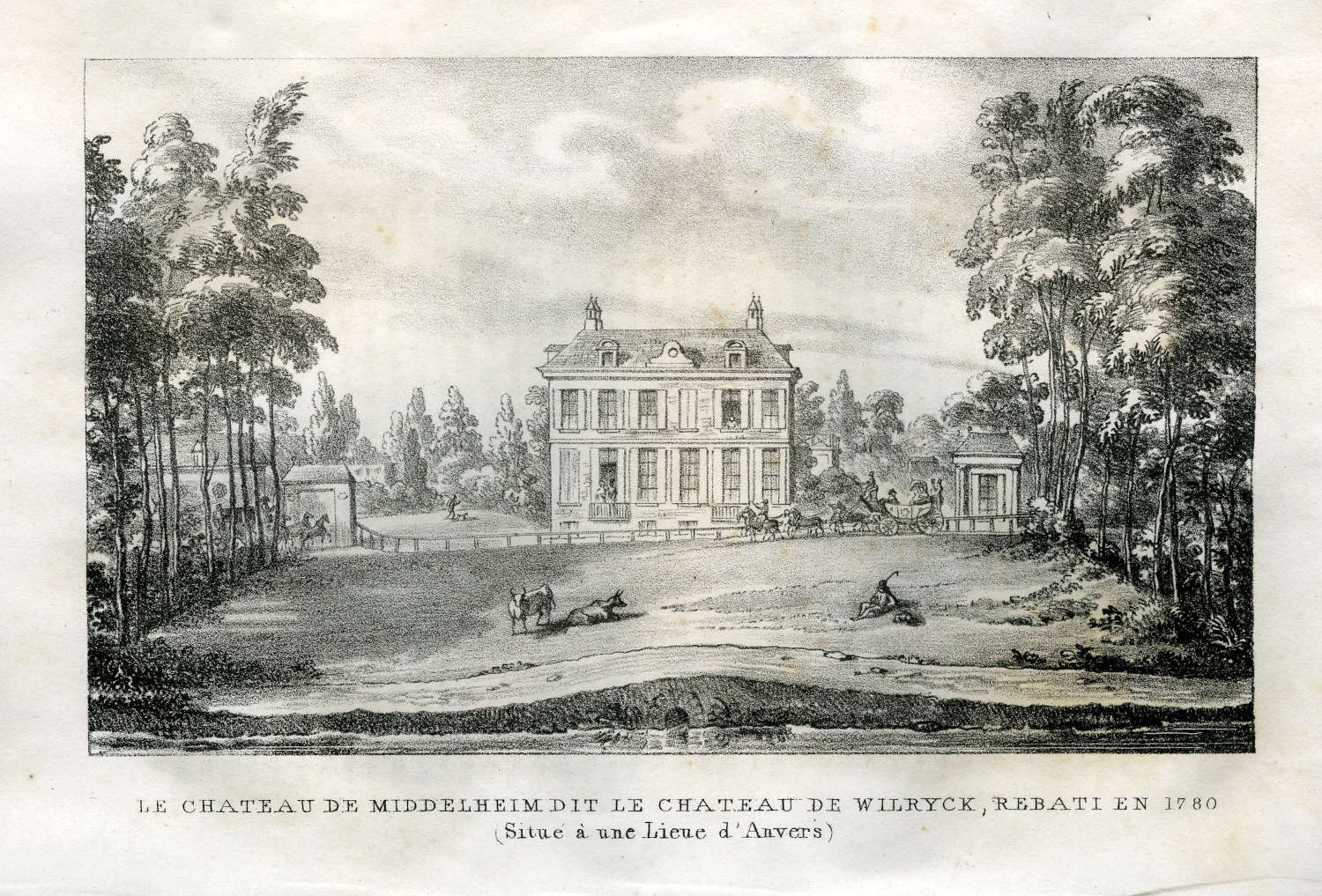
Having clarified the remarkable social and economic status of the character, far more significant emerges his collecting efforts, both from a cultural and cognitive point of view, considering that these were all works personally chosen and purchased by him. The fact that he also put together a collection of art books, truly remarkable for that time, indicates a deep commitment to studies related to the works he was collecting. Some reflection of this can also be seen in the detailed descriptions of Rubens’ works contained in the sales catalog to which, in all likelihood, Van Schorel himself had a fundamental part in compiling, enriched evidently by the knowledge he acquired in collecting all the printed reproductions of them, which were also offered. It is evident that the extraordinary number of 3900 engravings testifies to the depth of his studies of the great Flemish painter, evidently the one he loved best. The prevalence in his works of the number of sketches also indicates a special interest in the most creative moment, rather than in the spectacular and decorative aspect of the finished works, the undoubted prerogative of a cultured collector’s commitment.
It should also be emphasized that when the particularity of some rare subjects described in the catalog, with specification of measurements and citation of reference prints, allows their confident identification today, the accuracy of attributions is punctual.

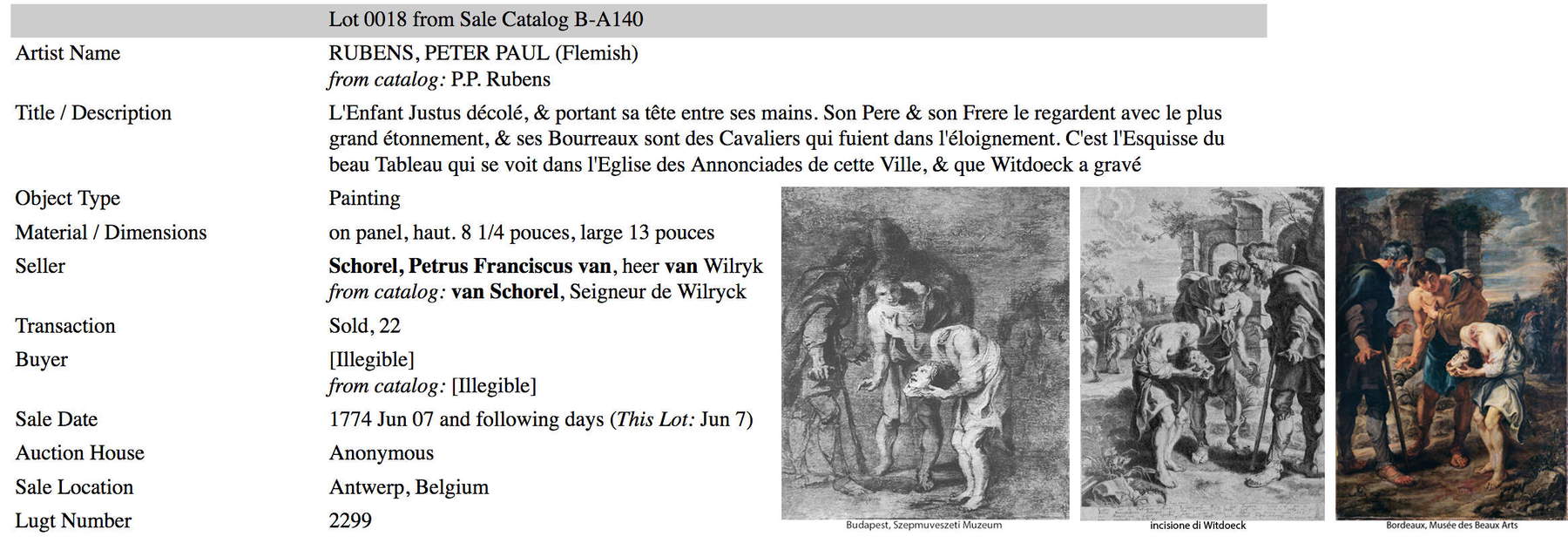



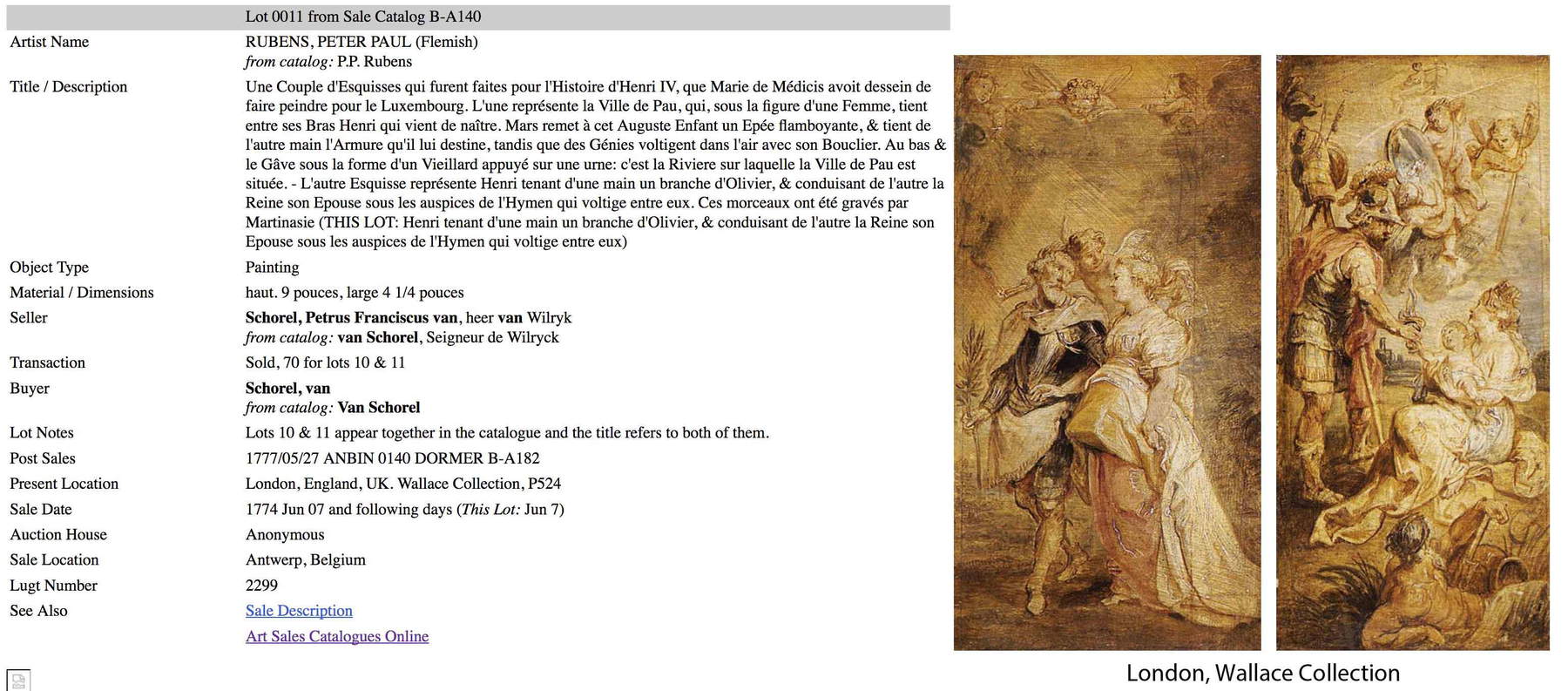
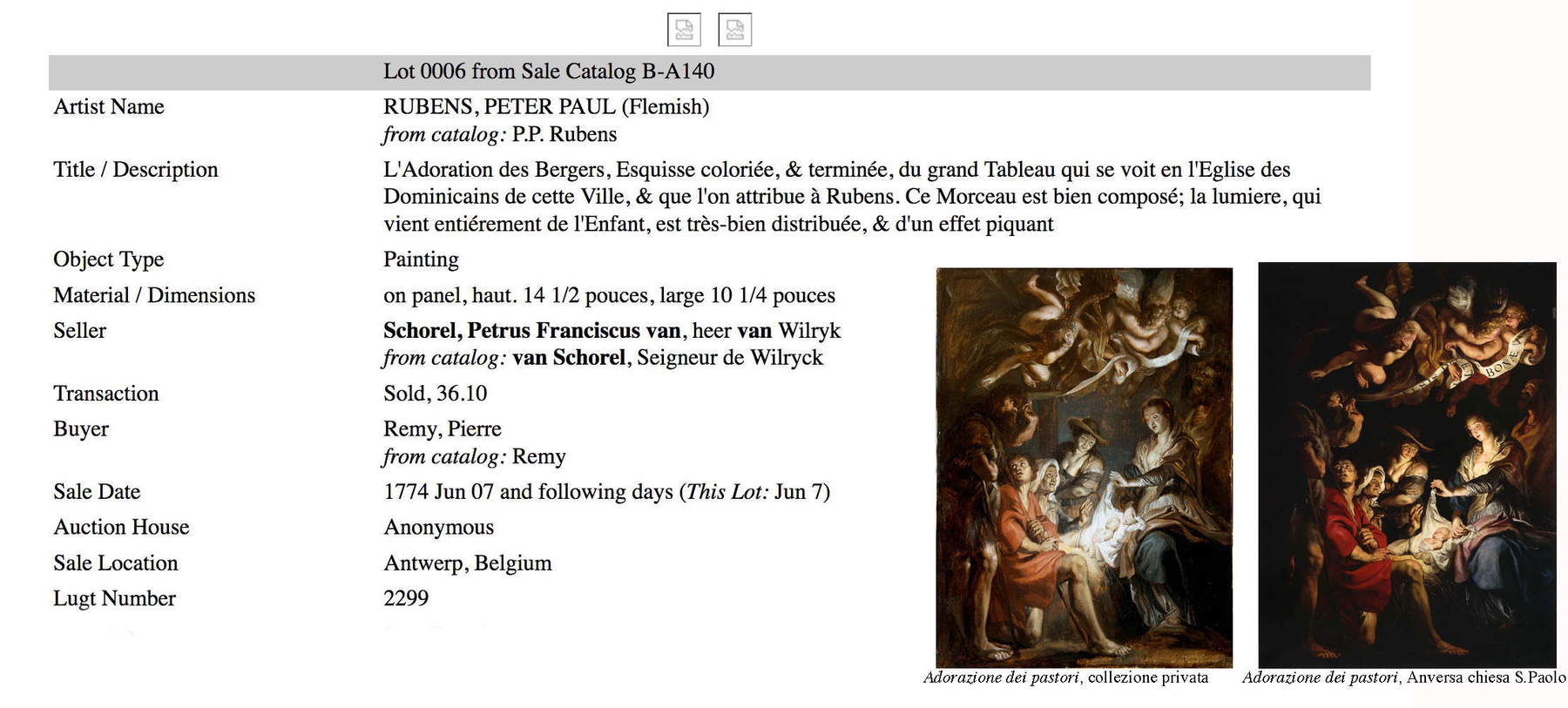
These considerations arouse some surprise to find that of the many Rubens sketches in the catalog, the only one to have suffered, without any explanatory commentary, a succinct rejection, is a sketch of the altarpiece depicting theAdoration of the Shepherds (oil on panel cm. 37.5 x 27.5) belonging to the church of St. Paul in Antwerp, present at No. 6 with this description: "L’Adoration des Bergers, Efquiffe coloriée, & terminée du grand Tableau qui fe voit en l’Eglife des Dominicains de cette Ville , & que l’on attribue à Rubens. Ce Morceau eft bien compofé; la lumiere, qui vient entiére-ment de l’Enfant, est très-bien diftribuée, d’un effet piquant. 14" 1/2 po. de haut fur 10“ 1/4 de large” . The work was simply mentioned as a copy, without illustration, in the margin of the tab prepared on the St. Paul’s church altarpiece in vol. I of the 5th issue of the Corpus Rubenianum Ludwig Burchard, entitled The life of Christ before the passion, authors Hans De visscher and Hans Vlieghe, with only a mention of its purchase at auction by a certain Van Merle.
The fact that, in addition to the lack of any commentary or reference in the extensive four-page dissertation on the St. Paul, there does not even appear an image of it, despite the fact that the volume is otherwise more than exhaustive in its reproduction, not only of the various autograph replicas, in collaborative ones, in sketches, copies, drawings and prints, and in all the material relating to each published work, suggests that a photograph of it was no longer available for the purpose, and consequently neither was a direct view of him, deferred perhaps to the memory of the doctoral dissertation on theAdoration of the Shepherds in the Work of Rubens, which Hans Devisscher earned in the 1980s. After all, it is sincerely surprising such lazy judgment on the part of an art historian and rare connoisseur like Hans Vlieghe, who has richly earned the esteem in which he is surrounded.
It should be pointed out that in the auction catalogs (in 12 of them), the buyer’s indications and the price achieved are simple handwritten notes by the various collectors participating in the sale, a custom still in vogue.
Of the 33 catalogs examined by Getty Research, the specimens containing these annotations refer to Pierre Remy’s purchase of two works by Rubens: lot No. 3 depicting the Miscellaneous Cal, an authentic masterpiece now in Berkeley, University Art Museum of California, and lot No. 6 which is the sketch with theAdoration of the Shepherds in question. Only in one of these catalogs is the purchase of both lots attributed to van Merlen, who is known only as a printer of sacred images. It is possible that this was a ruse, used so as not to be personally featured by Pierre Remy, whom the annals describe as a true celebrity among art dealers and experts of the time.
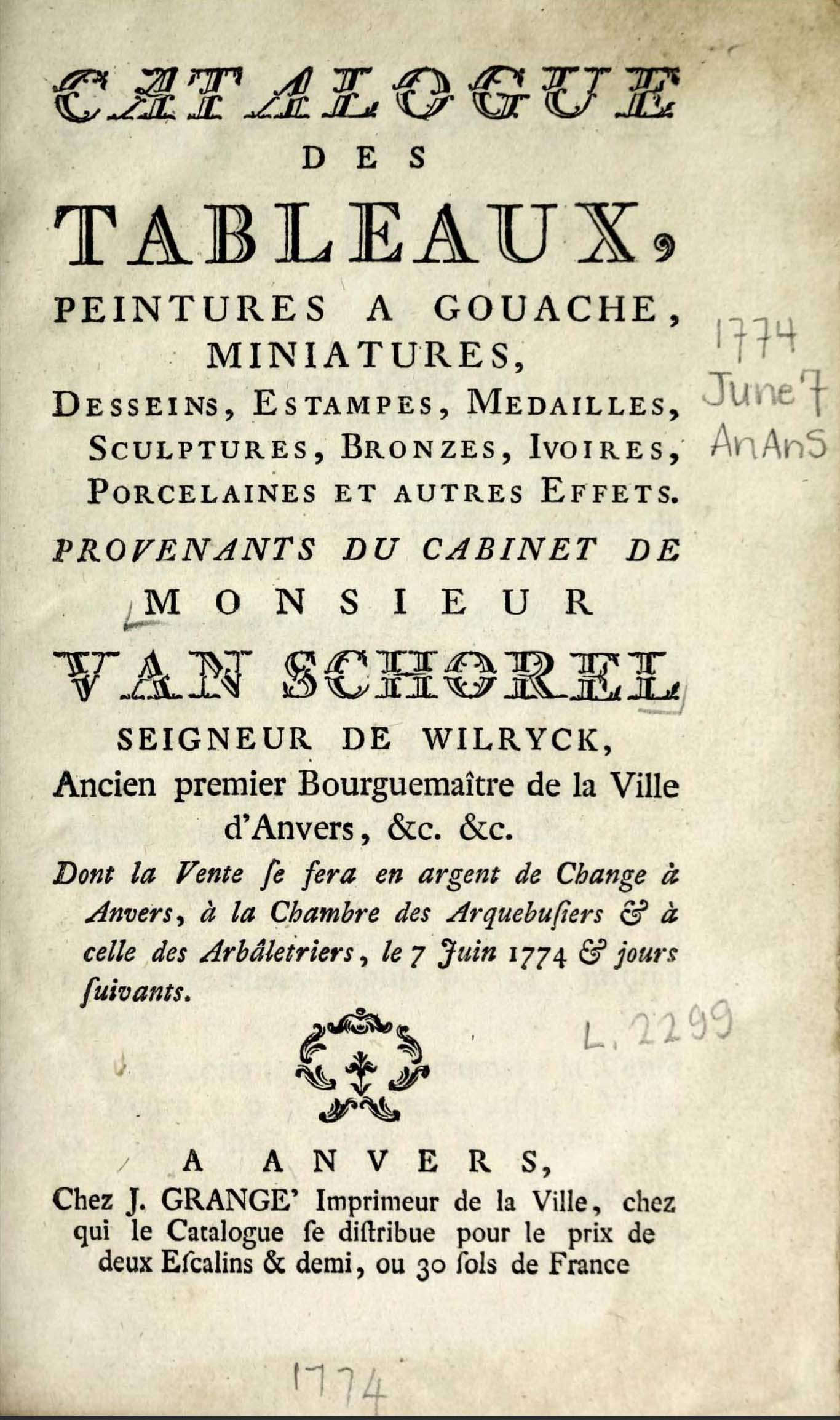
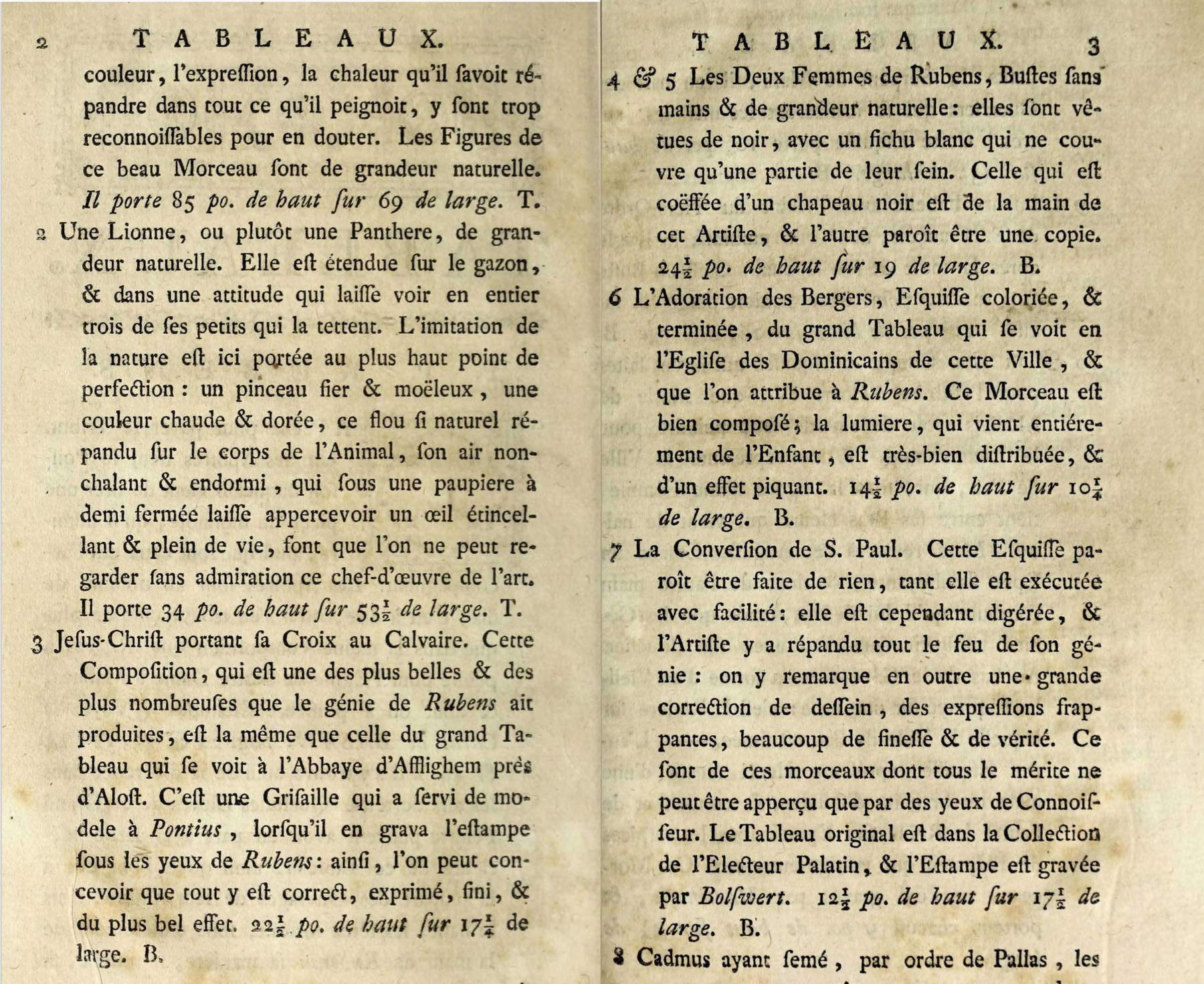 Catalog of the
Catalog of the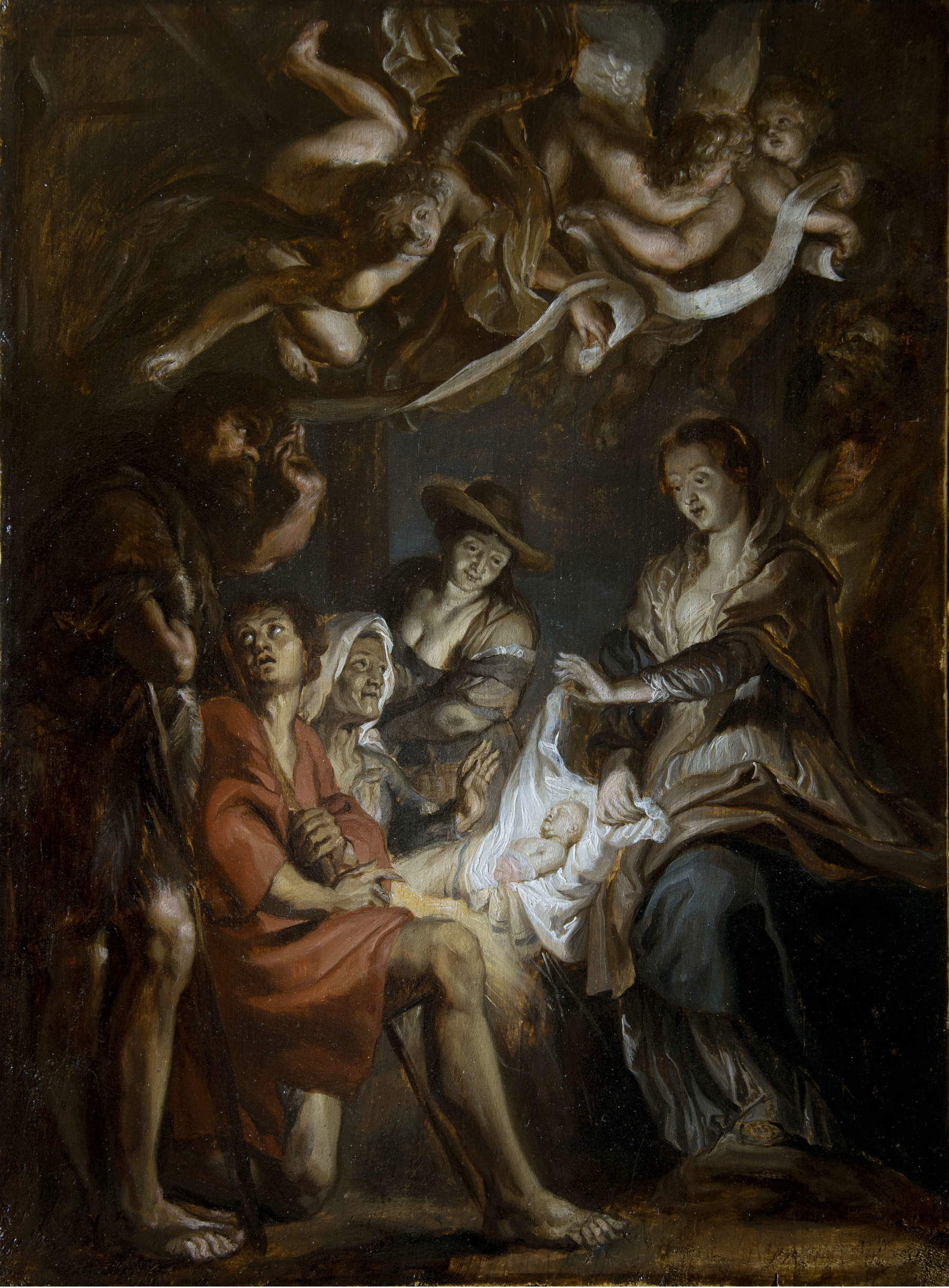
But coming finally to the subject of this discussion, the small painting, whose quick and tentative brushstrokes compose the same scene as theAdoration of the Shepherds belonging to St. Paul’s Church in Antwerp, evidences a painterly quality that deserves serious study, certainly more significant than the, albeit not insignificant, information about its earlier affiliation. The character of a preparatory sketch, rather than of a copy, is confirmed already, at first glance, by some pentimenti that indicate the proceedings of a work in progress.
The St. Joseph behind the Virgin gives a glimpse of a second head just below the final one, which is also, however, very inaccurate, as if to testify to the painter’s doubts.
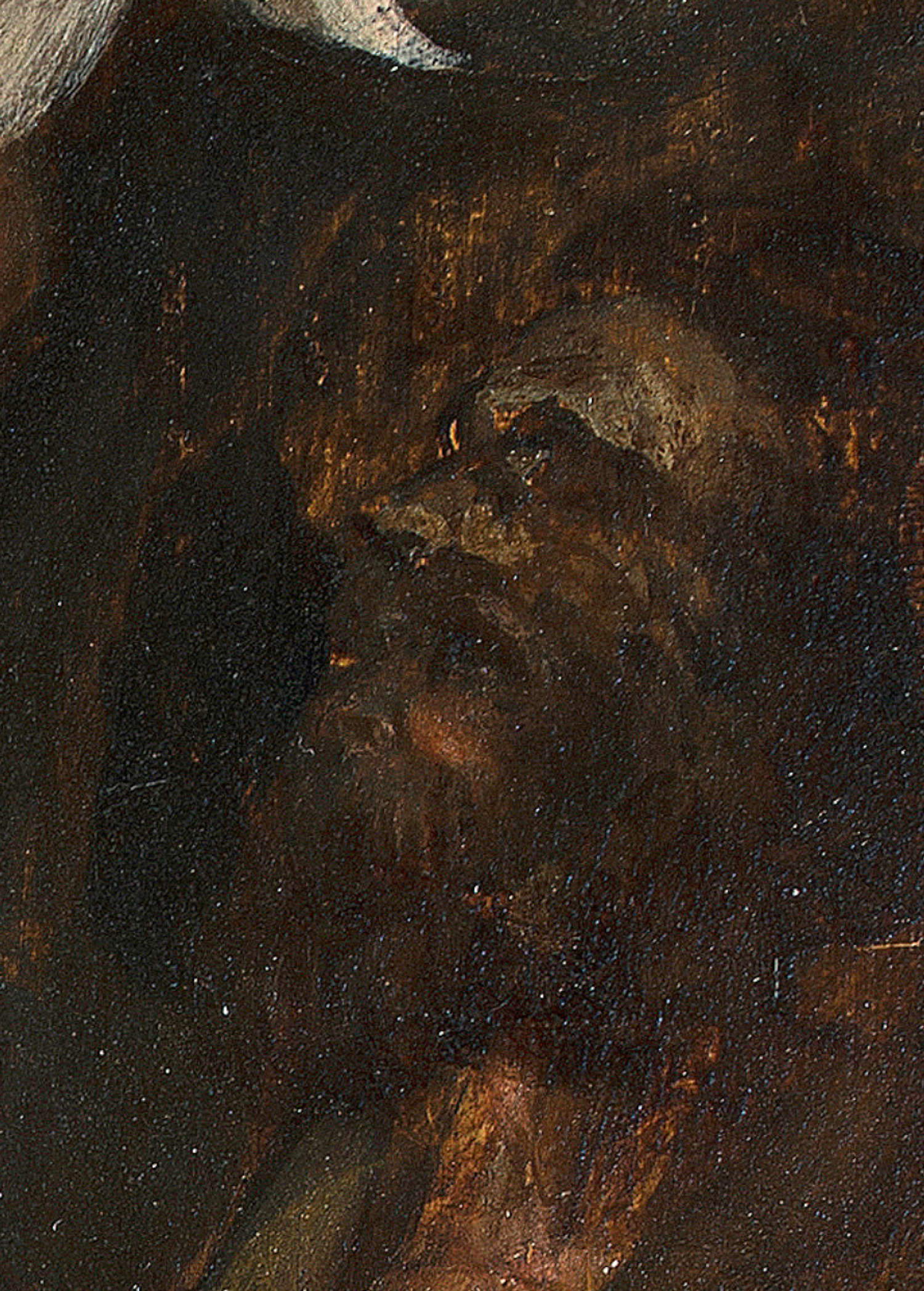
Although it appears so sketchy and incomplete in the correction, it is already possible to recognize an embryonic resemblance to the final one depicted in the final version.
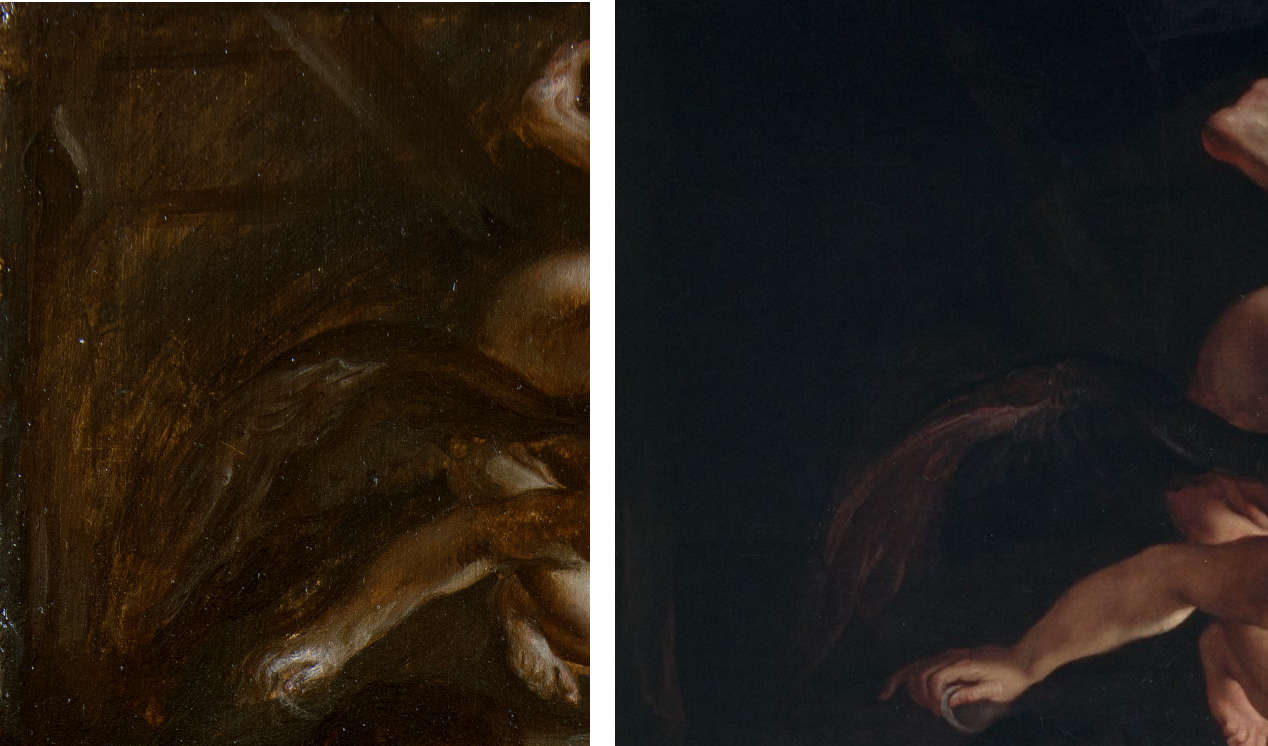
In the upper left corner are sketched some support beams which, although they depict only an idea, barely suggested with a few strokes, of the roof of a hut, later omitted in the final version, evidently cannot have been copied from it. On the left shoulder of the old woman adoring the Child, a hand with fingers pointing downward can be seen transparently, at first probably intended for the young woman in the wide-brimmed hat, later replaced in a raised position by the one protruding from the left side of the old woman’s head.
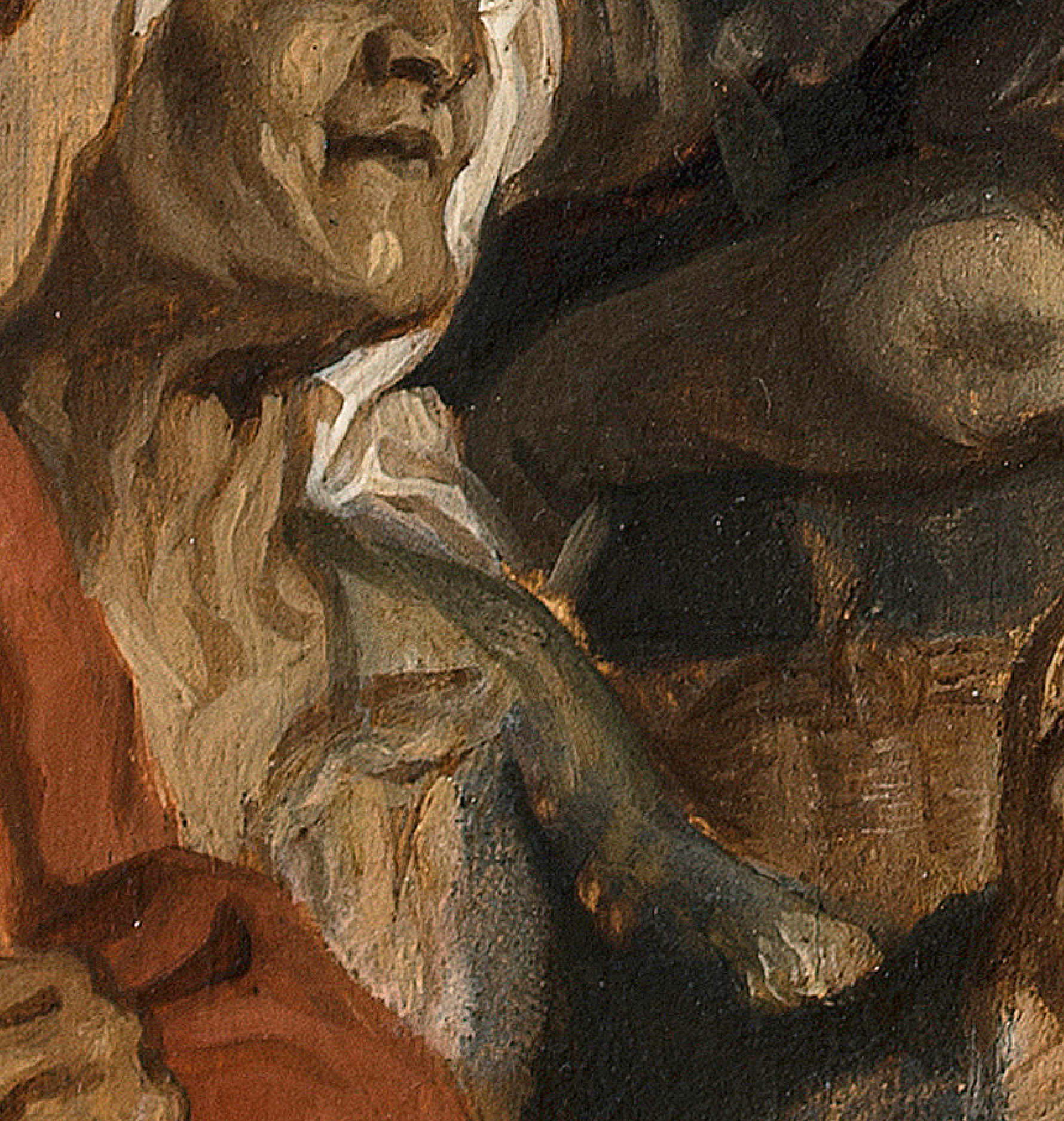
Evidently Rubens had initially thought to avoid a strict adherence to the composition of the Fermo picture, painted a few years earlier in Italy but whose sketch he had probably kept today in the Hermitage, later deciding to limit himself to only the mirror inversion in the position of the Child.
Infrared light, in false-color reflectography, is a technique that makes it possible to differentiate pictorial layers with a chromatically similar appearance, made, however, with pigments of a different chemical structure, which return colors very different from those visible under natural light conditions.
Thanks to it, it is possible to identify certain stages of a painter’s work containing variations and retouches made later in the elaboration of certain works. One can, in the case under consideration, verify that at first Rubens had planned to depict a single angel in flight above the scene below.
At a later stage he then decided to recompose a group similar to the one already painted in the Fermo altarpiece, however, executing the added part with a mixture of pigments of a different chemical structure, which, although appearing in natural light of the same color as the first angel, under infrared light changes completely, revealing itself to be added later mind in the final stage in which he intervenes with the same color also on the outlines of the other images, reinforcing them with highlights on the incarnations.
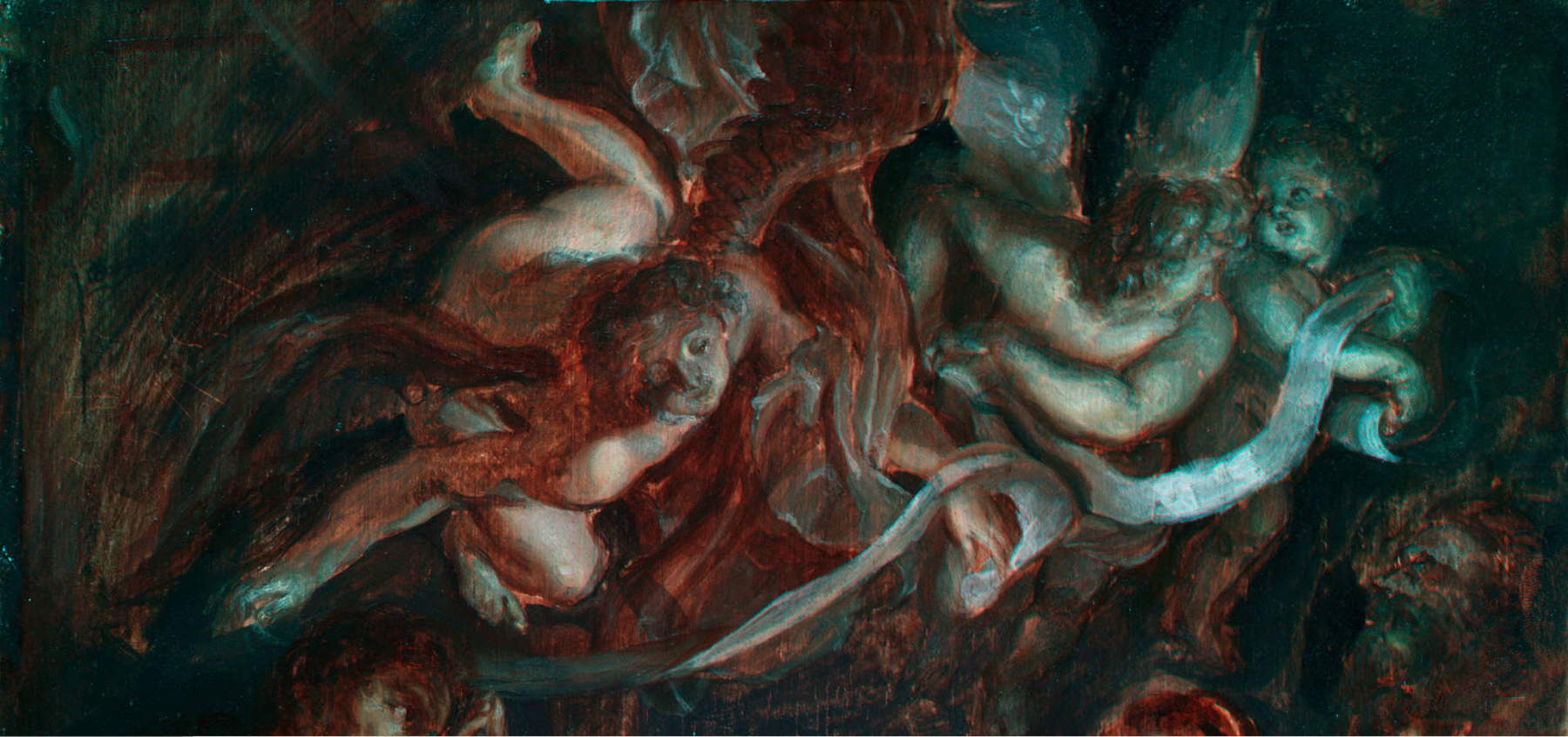
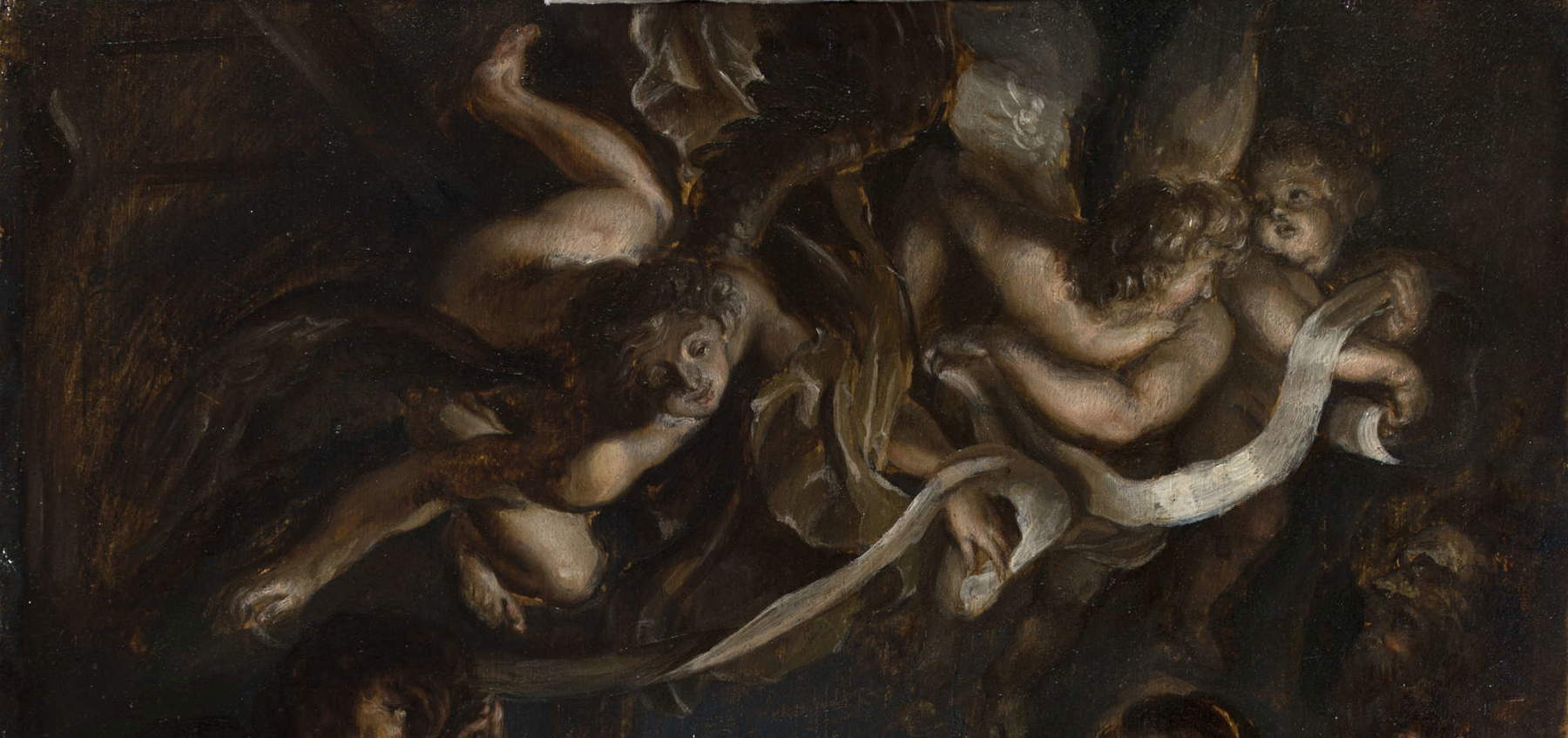
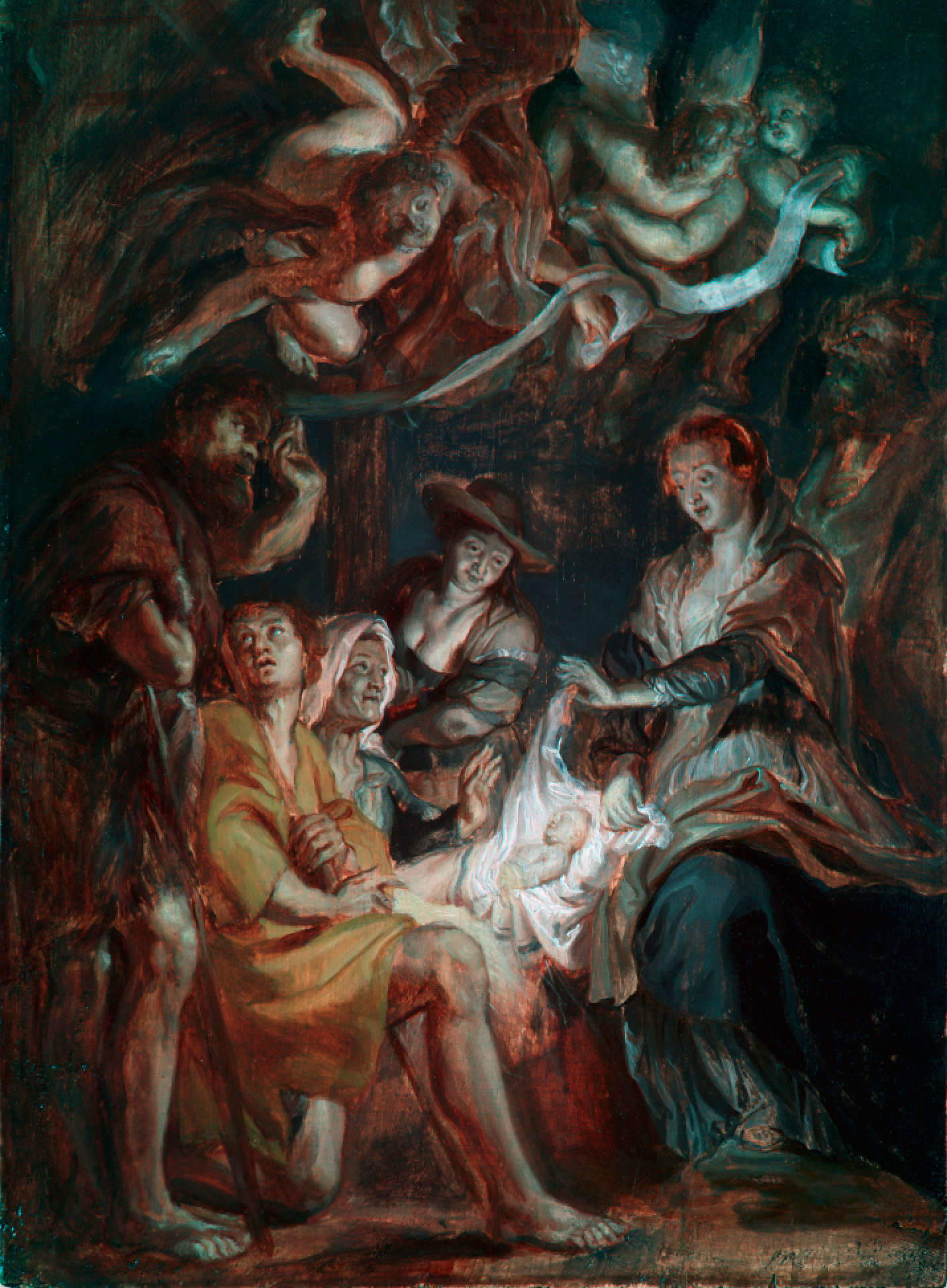
Looking at the Hermitage sketch, preparatory to the Fermo altarpiece, one would be forgiven for thinking that Rubens had the same doubts there in composing that group of angels. In fact, the disproportion between the size of the left angel and that of the other two, which are much smaller and of particularly sketchy execution, so much so that they are of visibly inferior pictorial quality, appears evident. In the final version belonging to the church of Fermo, the group appears remodeled in a much more homogeneous way, not only of course from a stylistic point of view, but also from a perspective point of view. The hasty summarization that highlights the sketch actually seems to suggest the hypothesis of a correction decided later already in the preparation phase.
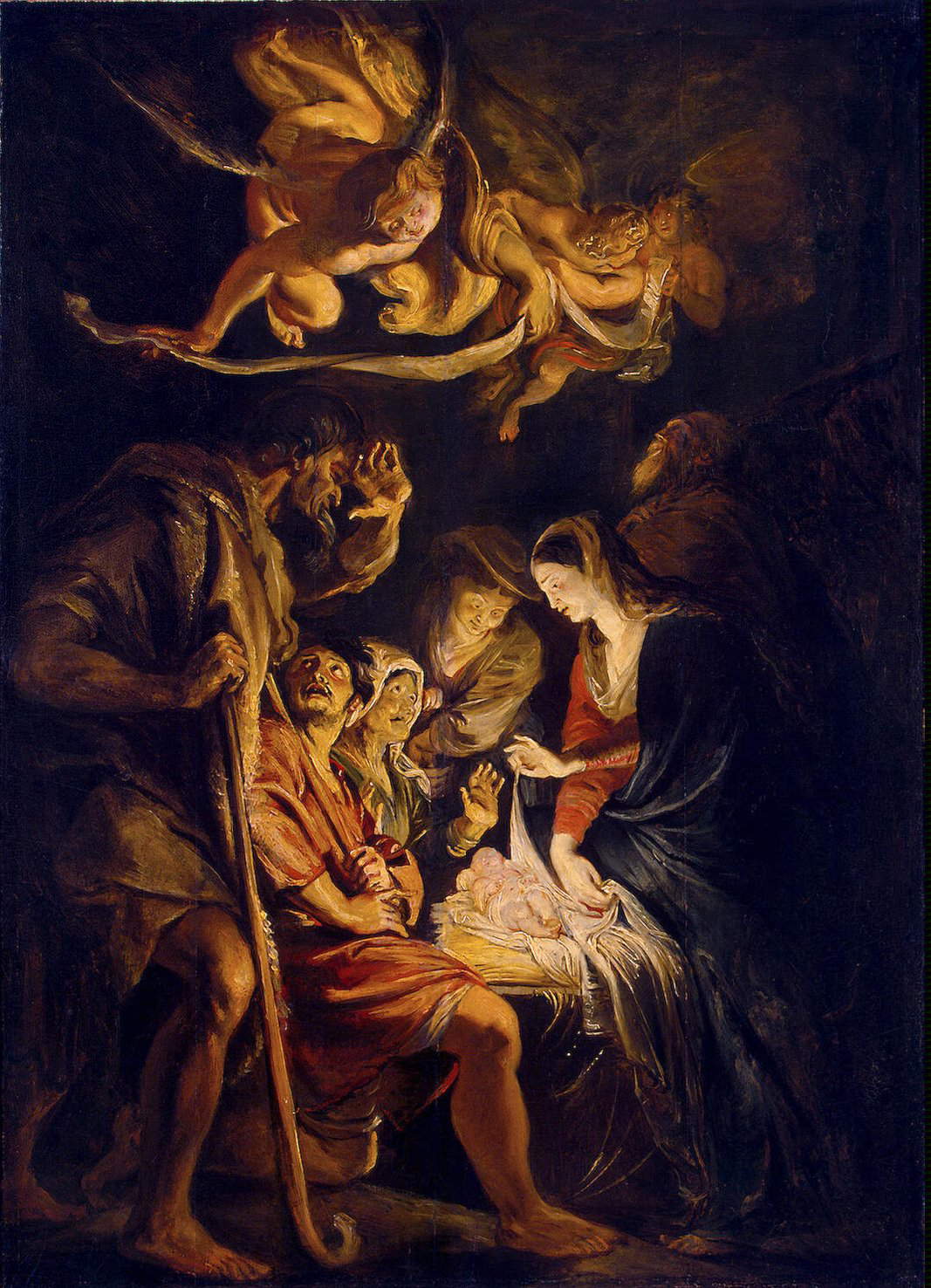
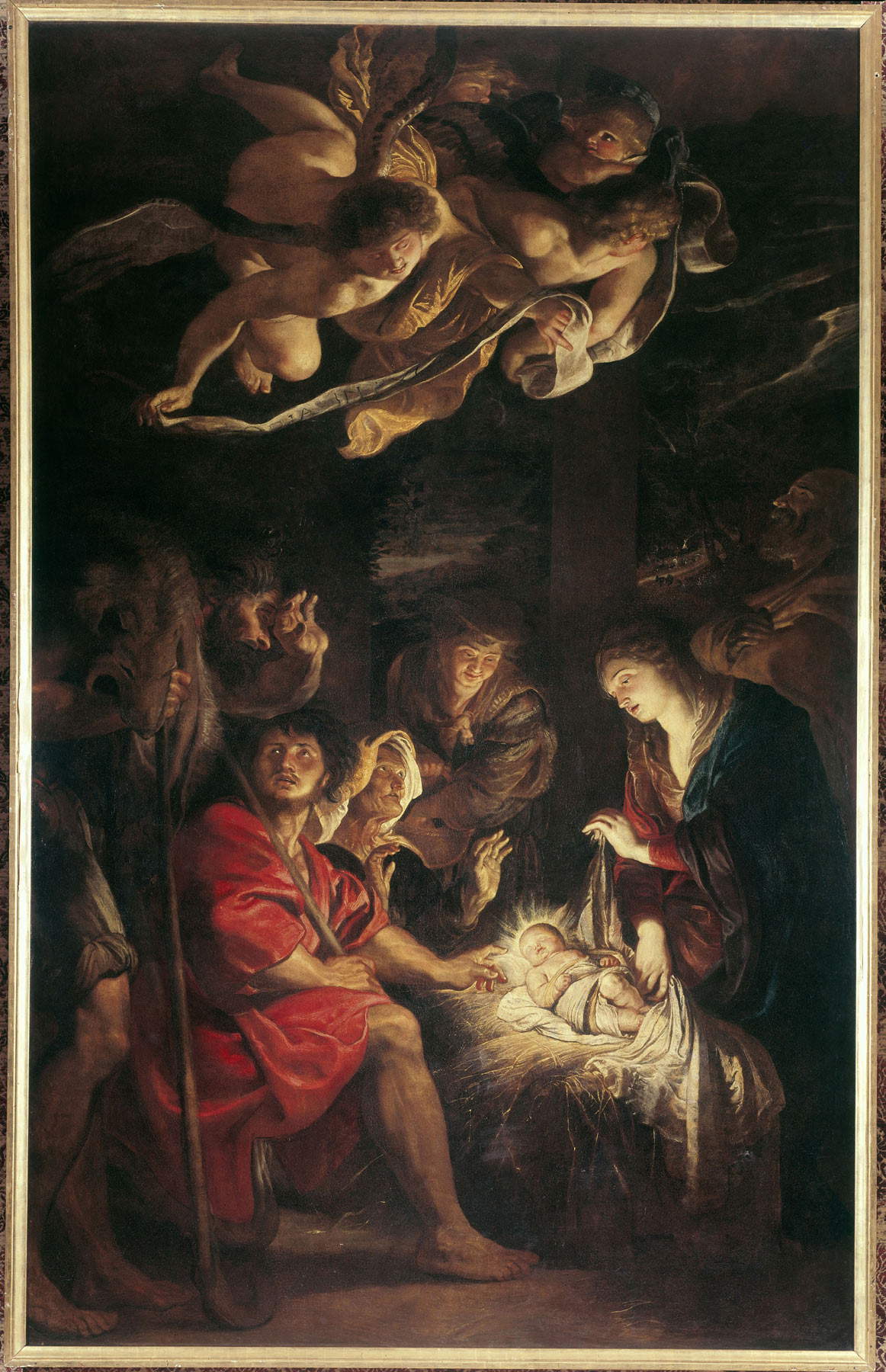
Having completed the arguments of an objective nature, those pertinent to a critical evaluation of the stylistic features and the general and particular quality of the drafting now loom, based on direct observation of the work and Rubens’s typical modus operandi , which are equally significant when compared to his many more chromatically elaborate sketches, especially if they belong to a limited time interval. Rubens’ working method, reveals that instead of mixing pigments into a single body, he builds the forms by passing through successive overlapping layers of color.
On a first layer, very roughly, he already composes complete images, with homogeneous brown backgrounds without details and, using the same pigment, secondary figures outlined only by simple contour lines. He then returns successively to each detail giving it body and evidence with the basic colors. Finally, he refines them, distributing highlights and reinforcing the modeling, but without too much concern for perfect coverage over the previous traces, so that the various passages remain clearly distinguishable In a sketch such as the one depicting Decius Mure telling his dream, preparatory to the painting belonging to the Liechtenstein Kunstmuseum in Vaduz, Rubens applies the final highlights in red to accentuate the brightness of the scene taking place outdoors. In a similar procedure, in a work such as theAdoration of the Shepherds, he resorts to chromatic reinforcements of light and neutral tones that are more functional to the nocturnal effect pursued.
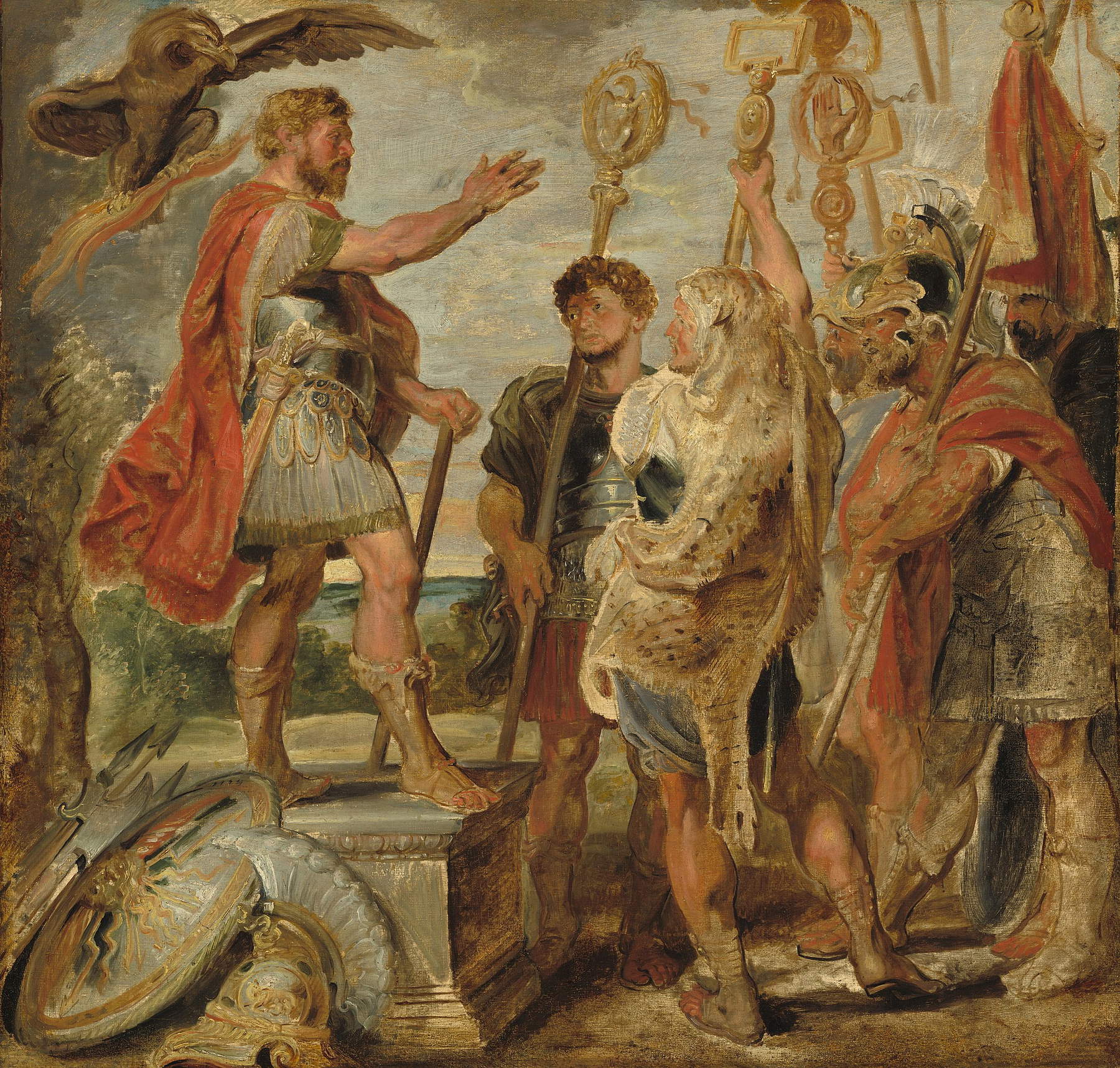
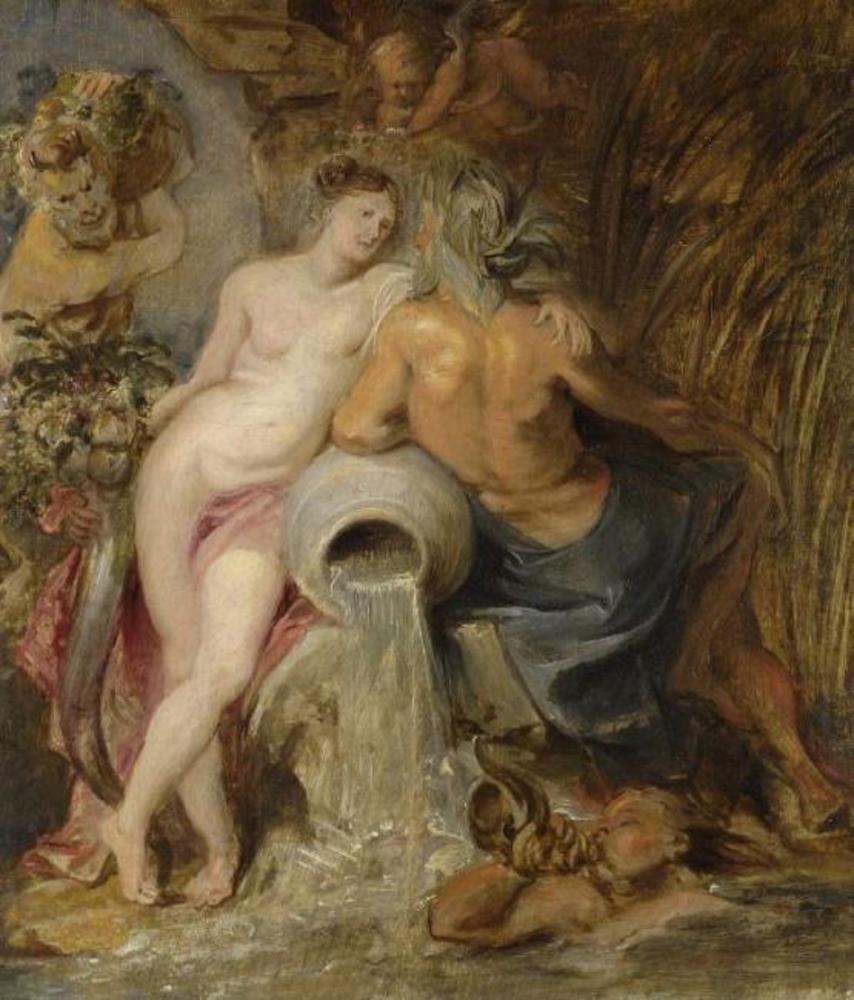 Pieter
Pieter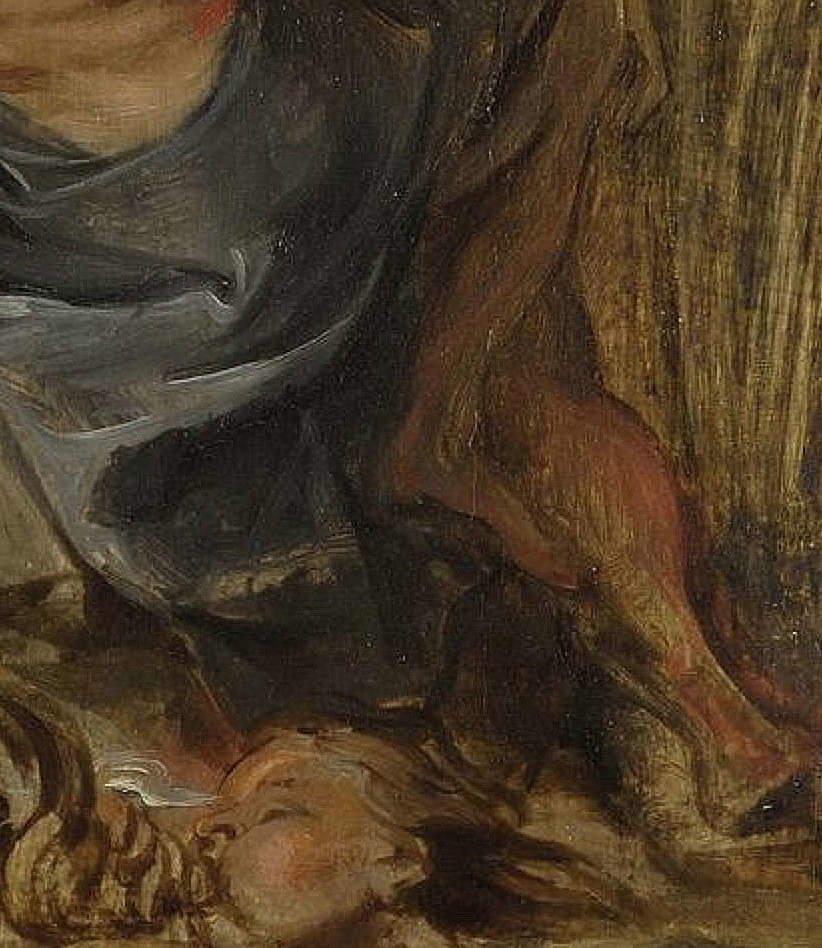
Even the rhythm of the rapid brushstrokes, absolutely preparatory to the unmistakable stylistic expressiveness of his painting, appears almost identical in the sketch with the Adoration of the Shepherds, where there is nothing to suspect the hand of a painter-copier, however skilled, who knows how to accord quality and stylistic verisimilitude, through the immediacy of such fast and uncertainty-free drafting. To the best of our knowledge, only one of his pupils, equally endowed with extraordinary talent, such as Van Dyck, when he was still in Antwerp in the master’s workshop as a collaborator, was able to confound even uncommon cognitive abilities.
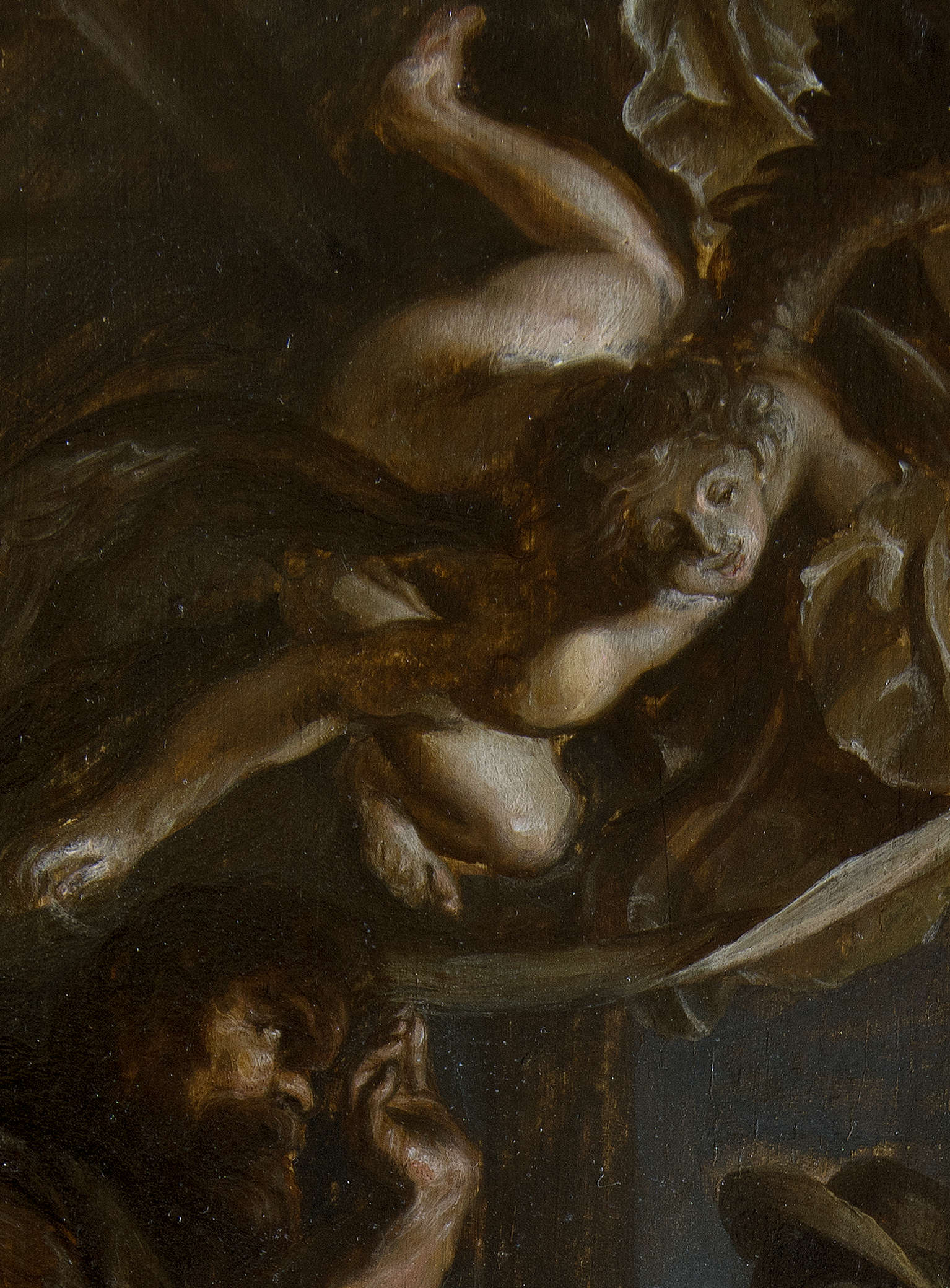
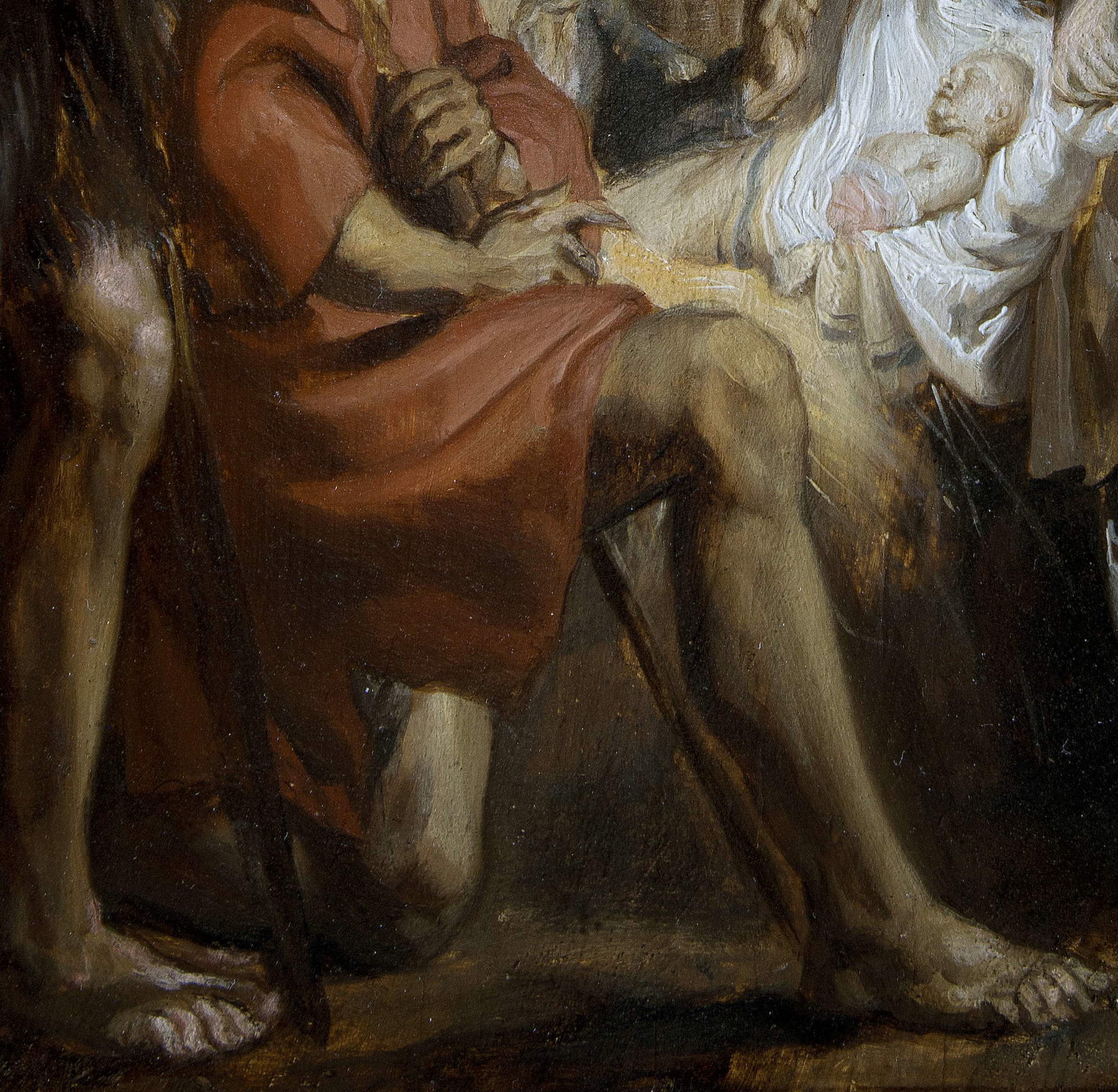 Pieter Paul Rubens, Adoration of the
Pieter Paul Rubens, Adoration of the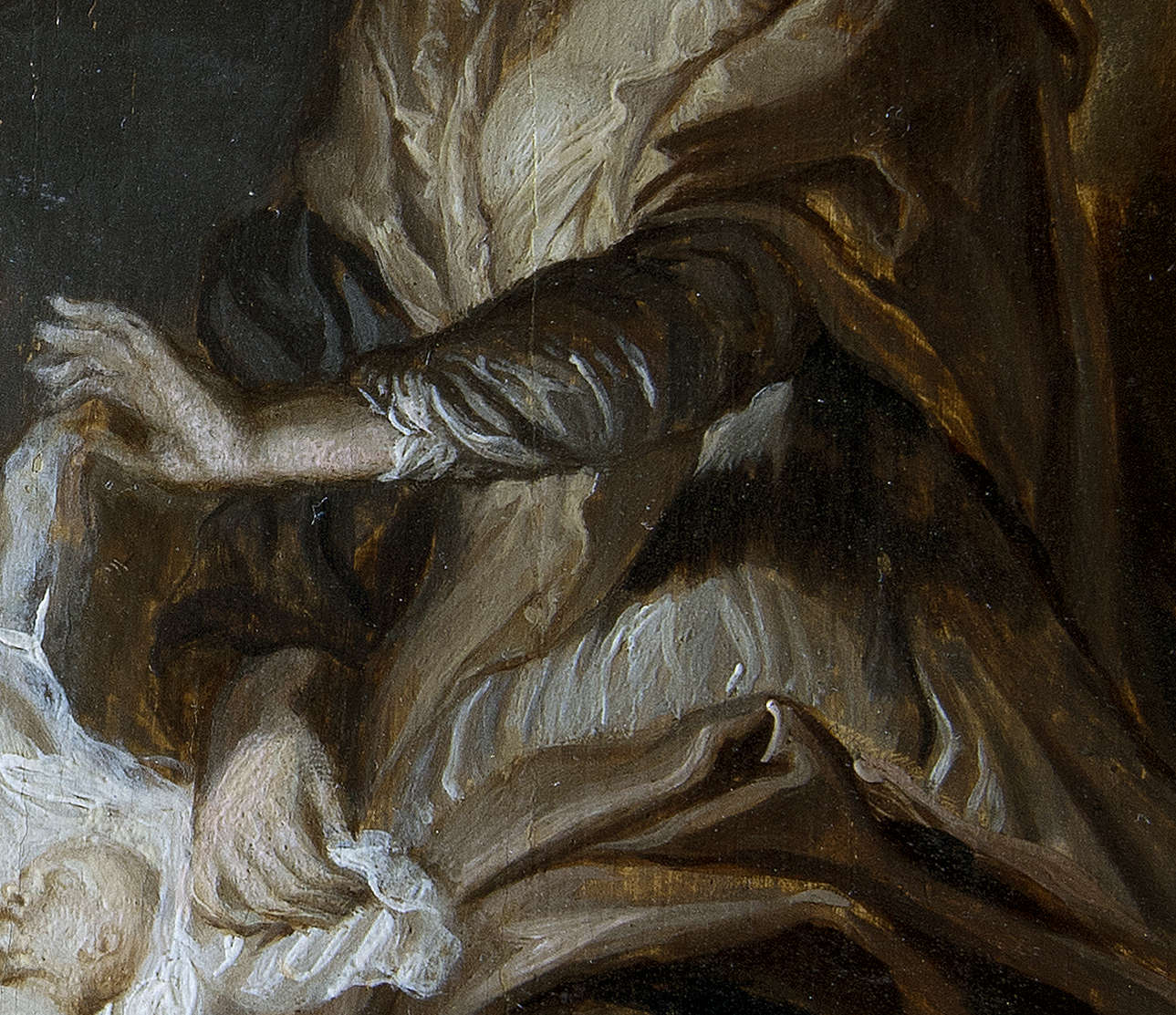 Pieter Paul Rubens, Adoration of the
Pieter Paul Rubens, Adoration of theWarning: the translation into English of the original Italian article was created using automatic tools. We undertake to review all articles, but we do not guarantee the total absence of inaccuracies in the translation due to the program. You can find the original by clicking on the ITA button. If you find any mistake,please contact us.




























